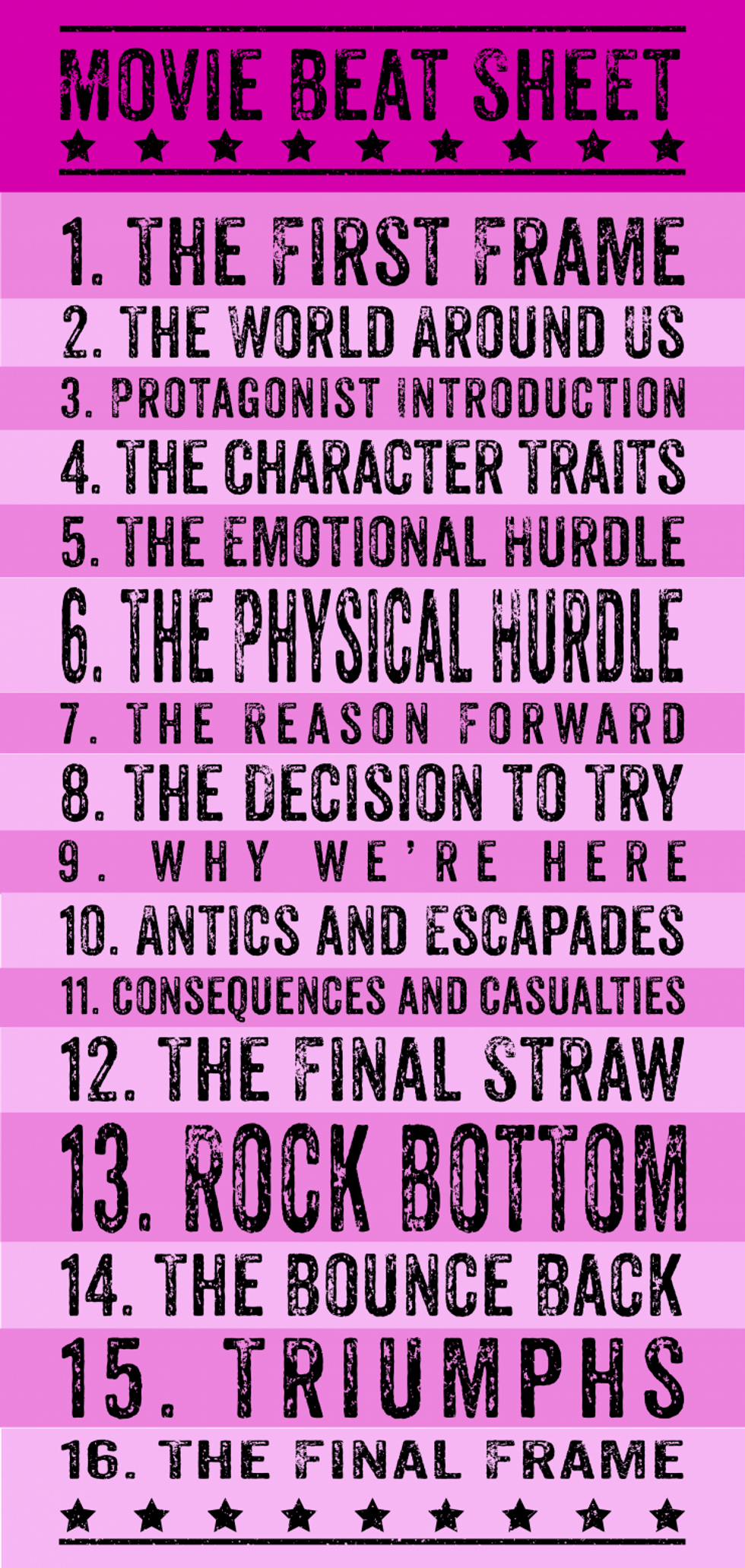Story Beats Are The Backbone of Your Screenplay
Doesn't matter if you're writing TV or movies, your story needs beats. But what are they?

'Whiplash'
You've probably heard this term thrown around a lot, but your story needs to follow the beats. Beats are what keep the audience invested. They are the emotional backbone of the story. The spine that holds everything upright.
Beats are so important to everything you're doing as a storyteller. They help you organize your thoughts and emotions when it comes to writing.
Today I want to go over the idea of beats and how they apply to your screenwriting.
Let's get started.
Story Beat Definition
First up, I think it's best we get a strict definition of the term we will explore for this post.
Story beats are points of action that occur in a basic story. When you connect the individual action points, they build up to a movie or TV idea. They are the pieces to a puzzle. Each of these moments builds on the next, because if X happens, then Y happens, and because Y happens, Z happens...and so on.
We even made an entire beat sheet so you can brainstorm your next writing assignment.
The Beat Sheet
A beat sheet is a list of all the beats that happen within your idea. It should prompt you to come up with your own beats that lie in order and help you construct a complete story. Beats are a plotting device, but they can also be a character development device too.
When a beat happens, you want to note what it makes characters feel and how it raises the emotional stakes.
Story Beat Examples
Really quickly, I wanted to go over some beats that happen in popular movies and TV shows. We can examine how they work on both plot and character levels. First up, let's think about beats we use as the opening of our stories.
How can we reveal something about the plot and also tell us something about our characters?
The original Fast & Furious scene starts the movie out showing the bad guys. A team of elite thieves using cars to rob trucks. We know they'll be who we're trying to find the rest of the movie, and we know they're dangerous.
How about something on TV? Perhaps a network show that found success, like Lie to Me.
We open on beats in an interrogation. We know one person is basically a human lie detector test and the other is a criminal trying to lie. We get a lot out of the character, but we can also see how they fit into a procedural show.
And how that show can expand from just one episode into a series.
Opening scenes are easy to pull apart, but the hardest beats happen in the middle of an episode or movie.
How do they both move who a person is forward and also push the plot?
Think about a TV show like Fargo.
In the scene below, we have someone who needs to have their inner vengeance and ruthlessness channeled. This is where Lester is goaded into becoming an accomplice. We move the plot forward, we need to have a murder for the show to exist, and we need to see a character crack. Because the entire season will be about him cracking over and over.
In a movie, the middle, or second act, is used to build tension, comedy, or another thematic emotion. So in a movie like Enemy at the Gates, we not only need to see a sniper's legendary prowess on display but also learn about a love story that makes him more human and relatable.
It's a love triangle that may betray him at the end.
We also should meet his friends and understand why they're fighting.
Of course, the third act beats help us bring the story and character arcs home.
In TV, for a pilot or episode, you want to wrap things up so we know there's a conclusion to the problems addressed in the episode.
One of the best comes in Season 7, Episode 6 of Mad Men called "My Way". When Don and Peggy bury their latent anger and fully get out of this paternal or teacher-student relationship. He sees her as an equal but they also see each other as deeply flawed humans. They get over it by slow dancing. Like Don is giving her away at her wedding to the work.
It's subtle and beautiful—a true sign they have come together.
In a movie like Princess Bride, the beats in the third act need to reconcile plot points and emotional arcs. Inigo Montoya has spent his entire life looking for the man who killed his father and scarred his face. That man has 6 fingers.
Well, at the end of the third act, that guy comes a-calling. We know they have to fight for him to fill a giant hole in his heart and to help finish the movie out.
Hopefully, this cleared up story beats for you and you're ready to write.
Got questions?
Let us know in the comments.
Up Next: Get our free screenwriting eBook!
So much of what we're talking about on No Film School when it comes to screenwriting is summarized in our new eBook. It also helps guide you through a 10-week writing plan that will get your script actually finished.
- Story Beats: How to Create the Backbone of Your Screenplay ›
- How to Write a Slasher Movie ›
- What Are Some Classic 'James Bond' Story Beats and Tropes? ›


 "'Back Home"via Mercedes Arutro
"'Back Home"via Mercedes Arutro 'Back Home'via Mercedes Arutro
'Back Home'via Mercedes Arutro 









